If you’ve ever thought about getting a tattoo over a scar, you’re not alone. Many people explore this option as a way to reclaim their body, transform a scar into art, or simply feel more confident in their skin.
But before you head to the tattoo studio, there are a few important things you need to know.
This article will guide you through everything about tattooing over scars, from understanding your scar type to preparing for the process and what to expect during and after the tattoo.
Table of Contents
Can You have Tattoo Over Your Scars?
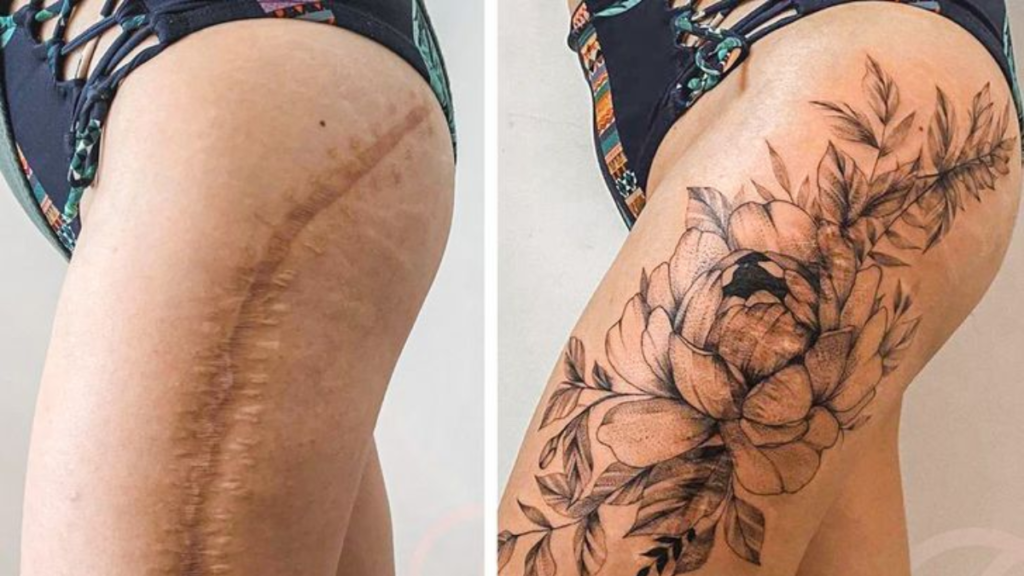
Yes, you can tattoo over scars, but it’s not always straightforward. Tattooing over scars requires extra care and skill because scar tissue is different from normal skin. Whether it’s possible for you depends on factors like:
- The type of scar
- The age of the scar
- Your skin’s healing process
Each scar tells a unique story, so let’s break it down.
Types of Scars and Tattooing
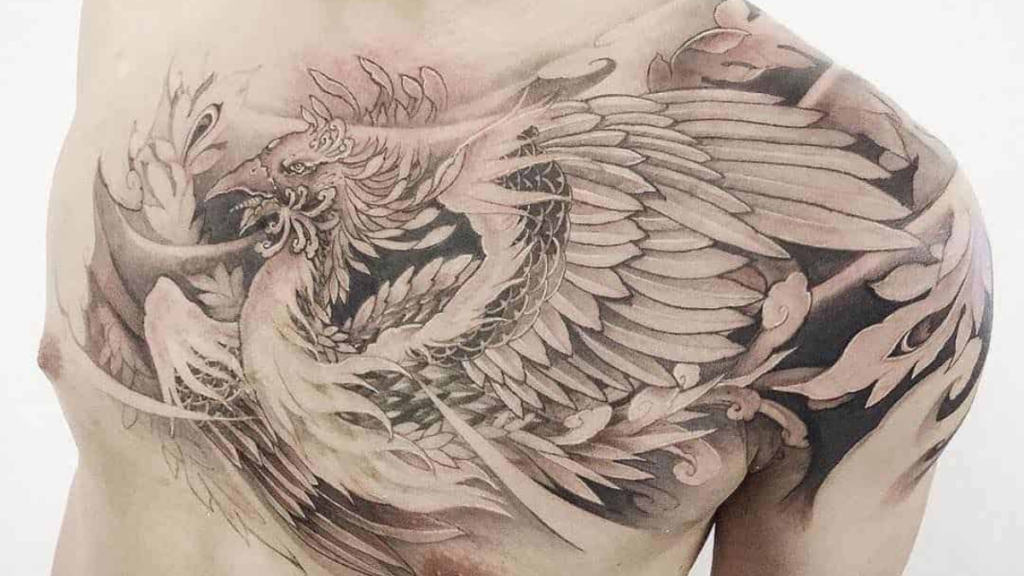
1. Surgical Scars
Surgical scars are usually flat and linear. Since they’re often well-healed and smooth, tattooing over them can be relatively easy, provided the scar is old enough (at least 1-2 years).
2. Keloid Scars
Keloid scars are raised and grow beyond the original wound area. Tattooing over keloids can be risky because the process might trigger more scar tissue growth.
If you have keloid-prone skin, talk to a dermatologist before getting tattooed.
3. Hypertrophic Scars
Hypertrophic scars are also raised but stay within the wound’s boundary. Like keloids, they can be tricky to tattoo over and may require extra caution.
4. Burn Scars
Burn scars vary a lot, from thick and textured to flat and smooth. Tattooing over them is possible but may require a design that works with the scar’s texture.
5. Stretch Marks
While stretch marks aren’t scars in the traditional sense, they’re another common area people want to cover with tattoos.
These areas can be tattooed, but results vary depending on the stretch mark’s size, depth, and color.
How Long Should You Wait Before Tattooing Over a Scar?
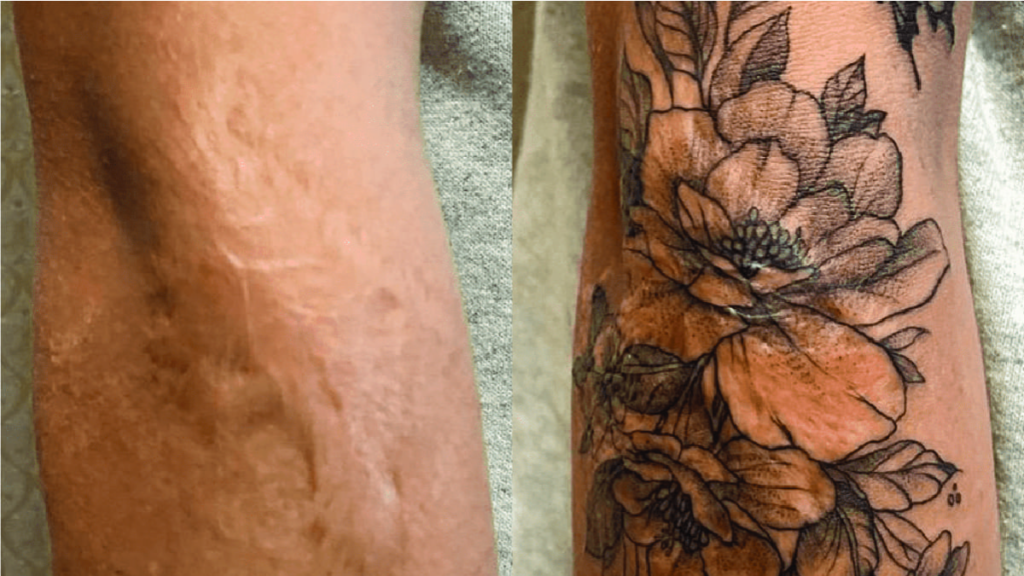
Patience is key when it comes to tattooing over scars. Most tattoo artists recommend waiting at least a year after the scar forms. This gives your skin time to heal fully and stabilize.
How do you know if your scar is ready? Look for signs like:
- The scar has stopped changing in color, size, or texture.
- There’s no pain, tenderness, or irritation.
What to Expect When Tattooing Over a Scar?
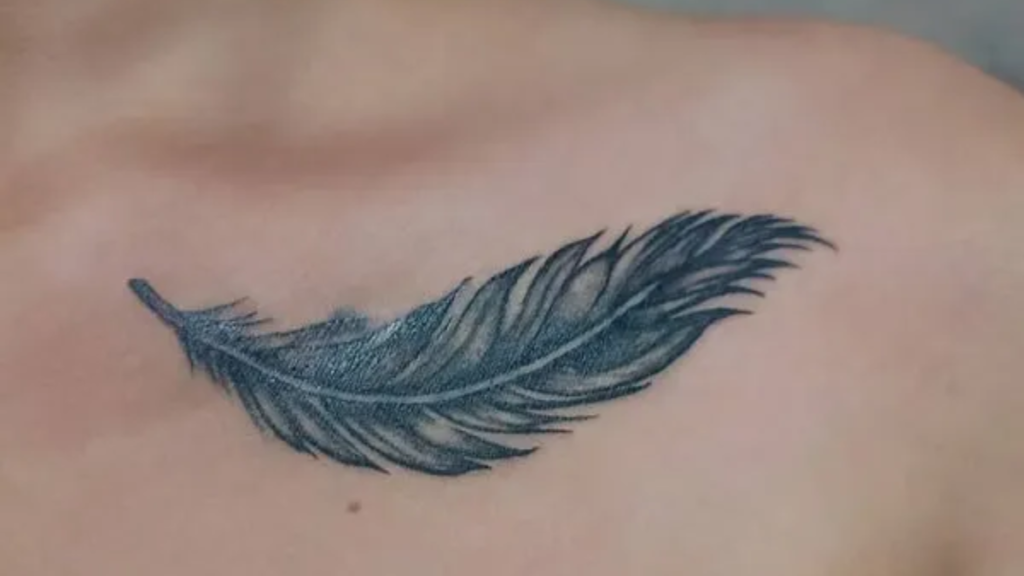
Getting a tattoo over scarred skin is a bit different from tattooing regular skin. Here’s what you can expect:
1. The Tattooing Process Might Feel Different
Scar tissue is less elastic than normal skin, so you might feel more discomfort during the process. Some scars can also be numb, making the sensation unpredictable.
2. The Ink May Behave Differently
Scar tissue doesn’t absorb ink the same way as healthy skin. This can cause the tattoo to look slightly uneven or patchy. A skilled tattoo artist will know how to work with this and make adjustments.
3. Healing Can Take Longer
Tattooed scars may take longer to heal because scar tissue is more delicate. Be prepared to follow your aftercare routine carefully to avoid complications.
Tips for Tattooing Over Scars
- Choose a Skilled Artist
Not all tattoo artists have experience tattooing over scars. Look for someone who has a portfolio showing work on scarred skin. Their expertise can make a big difference in the result. - Opt for a Design That Works with the Scar
Instead of hiding the scar completely, consider a design that incorporates its shape or texture. This approach can create a unique and meaningful tattoo. - Start Small
If you’re unsure how your skin will react, start with a small tattoo. You can always add more later if the first session goes well. - Be Honest About Your Medical History
Let your tattoo artist know about the type of scar, how it happened, and if you have any medical conditions that might affect the process. Transparency is important for your safety.
Caring for a Tattoo Over a Scar
After getting a tattoo over a scar, proper aftercare is essential to ensure smooth healing. Follow these tips:
- Keep the area clean and moisturized as per your artist’s instructions.
- Avoid picking at scabs or peeling skin.
- Stay out of direct sunlight, as scarred skin is more prone to damage.
- Check for signs of infection like redness, swelling, or unusual pain.
Remember, healing takes time, especially on scarred skin. Be patient and gentle with yourself.
Is Tattooing Over Scars Right for You?
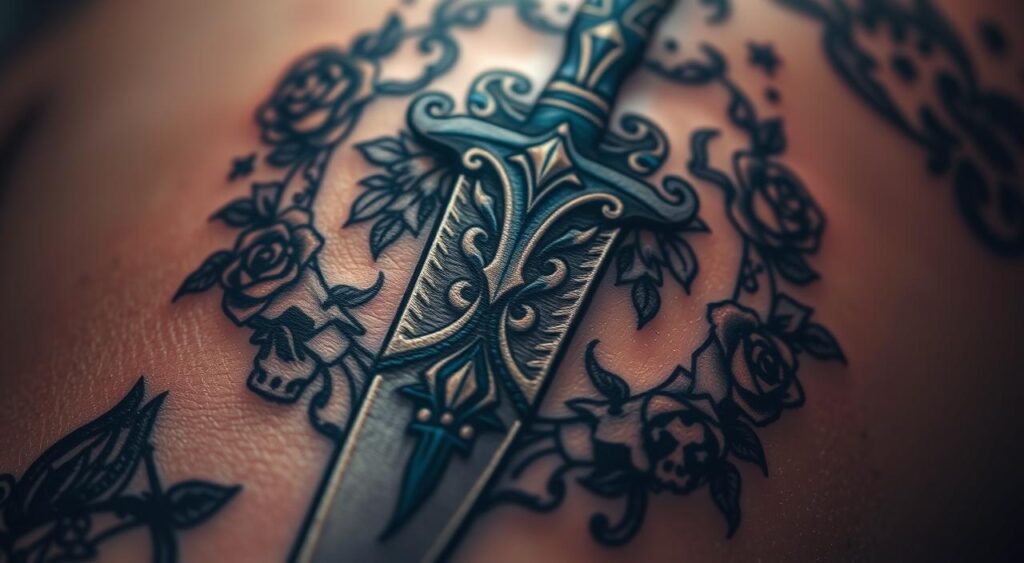
Tattooing over scars can be a deeply personal decision. Whether you want to cover a reminder of a tough time or turn it into a beautiful piece of art, the process can be empowering.
Just remember that every scar and every person’s skin is different.
Take your time to research, find the right artist, and understand what to expect. With the right approach, your tattoo can become a symbol of strength, healing, or simply a part of your story.
Have questions or concerns about tattooing over scars? Drop them in the comments or reach out to your tattoo artist for personalized advice. Whatever you decide, make sure it feels right for you!
Also read – You must avoid this soaps on your new tattoo!

Pingback: How Much Do Sleeve Tattoos Cost? - tattoopassionate.blog